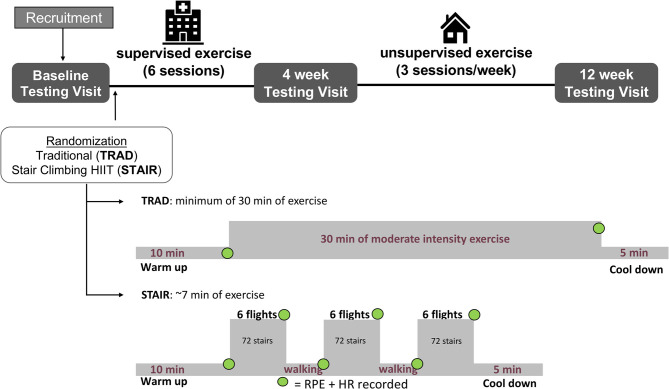Figure 1.
Illustration of the study timeline and exercise interventions. Participants were recruited and completed the baseline testing visit and then were randomized to either the traditional moderate-intensity continuous training (TRAD) or stair climbing high intensity interval training (STAIR) groups. The participants completed six sessions of supervised exercise at the Cardiac Health and Rehabilitation Center (CHRC) and then underwent the second testing visit. Thereafter, the participants completed unsupervised exercise for an additional 8 weeks and then completed the final testing visit. TRAD consisted of a minimum of 30 min of moderate intensity exercise at 60–80% peak heart rate. STAIR consisted of three bouts of climbing a single flight of stairs 6 times at a self-selected, but vigorous pace (14–15/20 RPE) separated by a ~90 s periods of active recovery at a comfortable pace (~7 min total of high and low intensity intervals). For both exercise protocols heart rate was monitored continuously throughout the exercise session. Each of the estimated exercise times include the 10 min warm-up and 5 min cooldown. RPE and HR were recorded on paper at the specific timepoints indicated by a green dot. RPE, rating of perceived exertion; HR, heart rate. The hospital icon was created by Nibras@design, the nounproject.com. All other icons were developed using Microsoft PowerPoint (version 16.45 for Mac).

